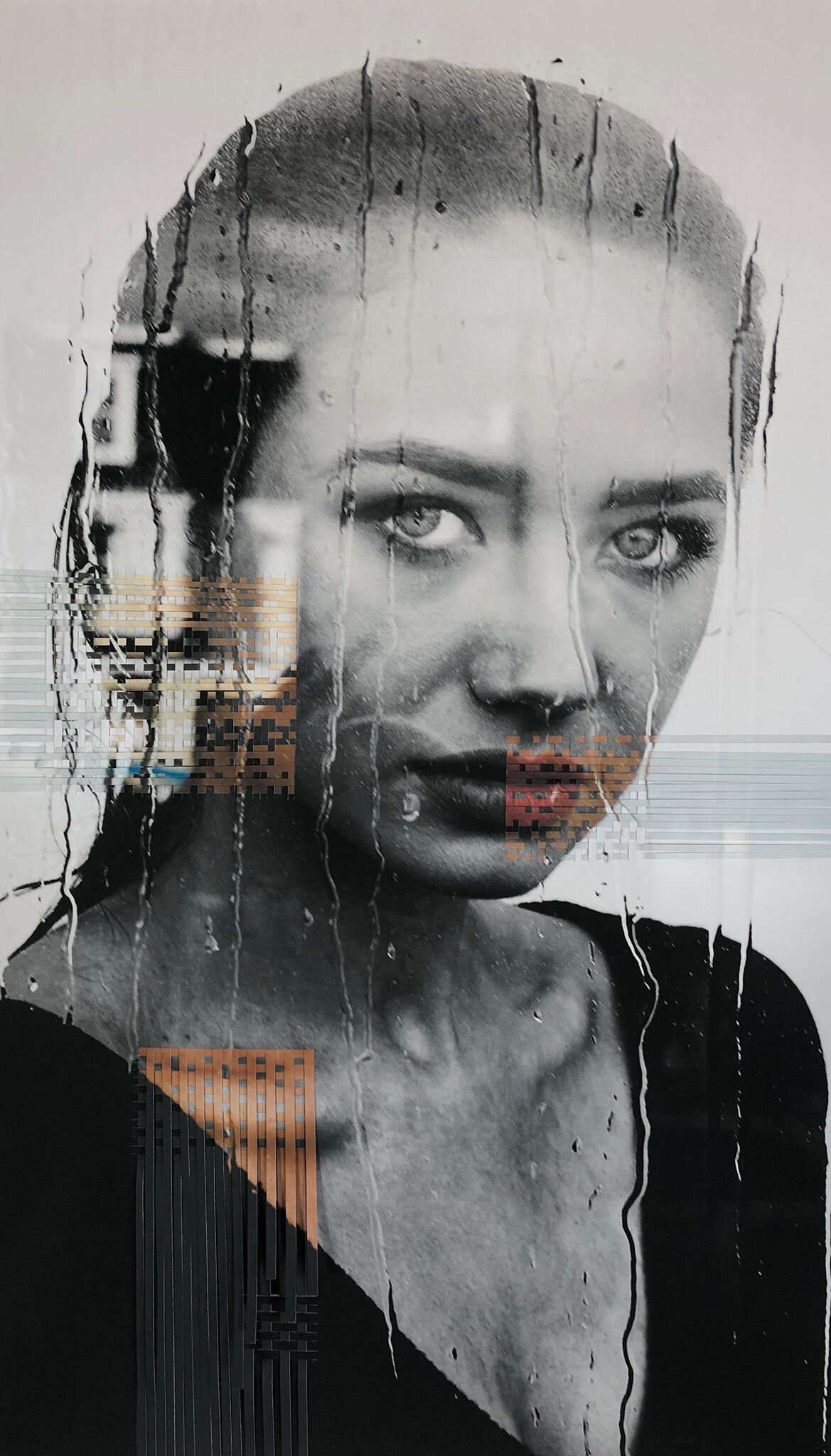Interview with artist Ashley Murphy #TheMaskedProject
Ashley Murphy is an Arkansas native living and working in Little Rock. She is a graduate of Arkansas State University. Ashley has been practicing photography for over a decade and her work has been featured in numerous publications and art shows over the years. Her photographs are in private collections throughout the region. Her first published collection is The Masked Project. Ashley has always been fascinated with eyes. This project evolved from her need to document, through the eyes of her subjects, the crazy and stressful times we are in and how to cope. She and her husband Mac are owners of M2 Gallery in Little Rock. Her work can be found at M2 Gallery as well as at ashleymurphyimages.com.
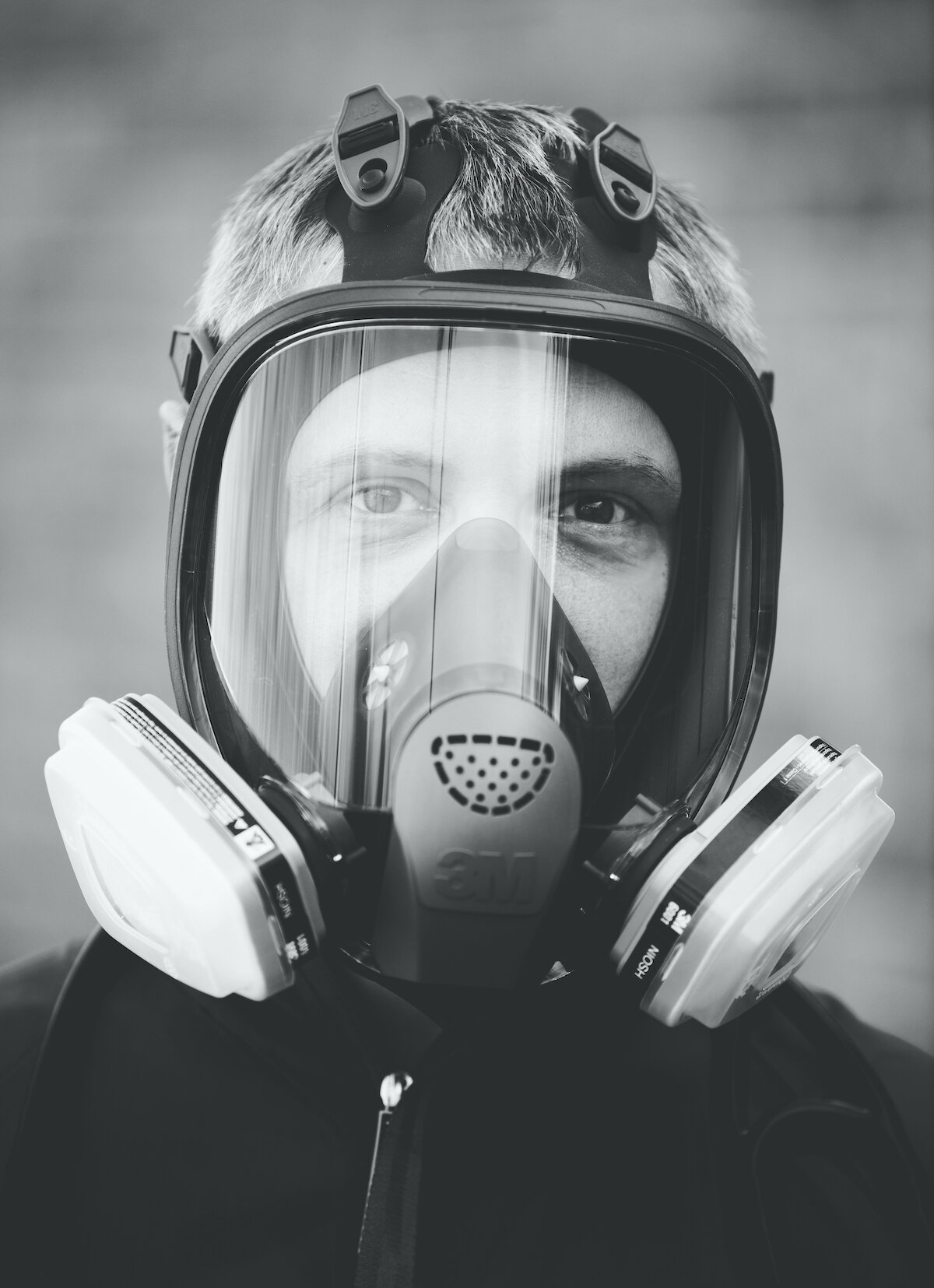
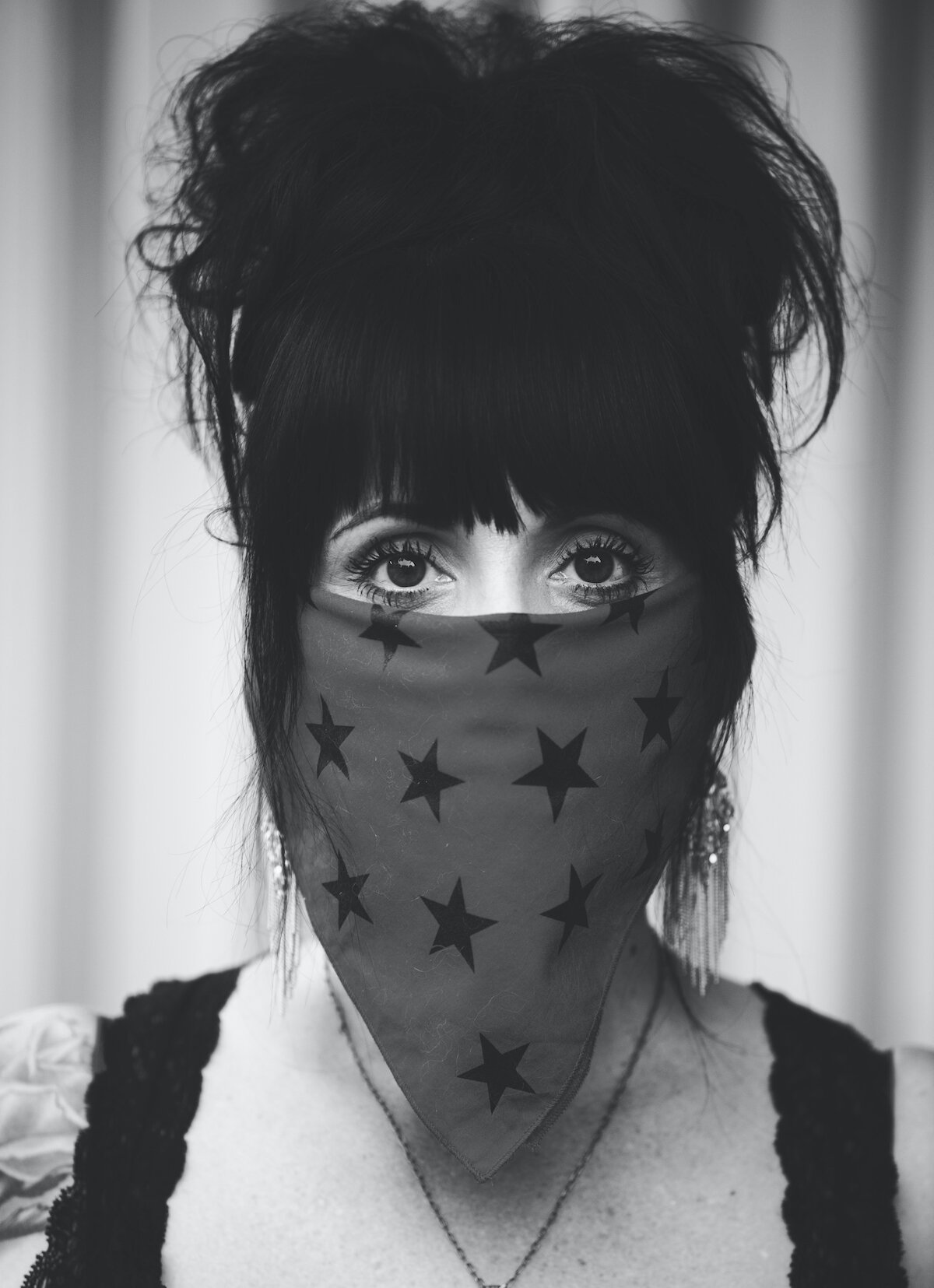
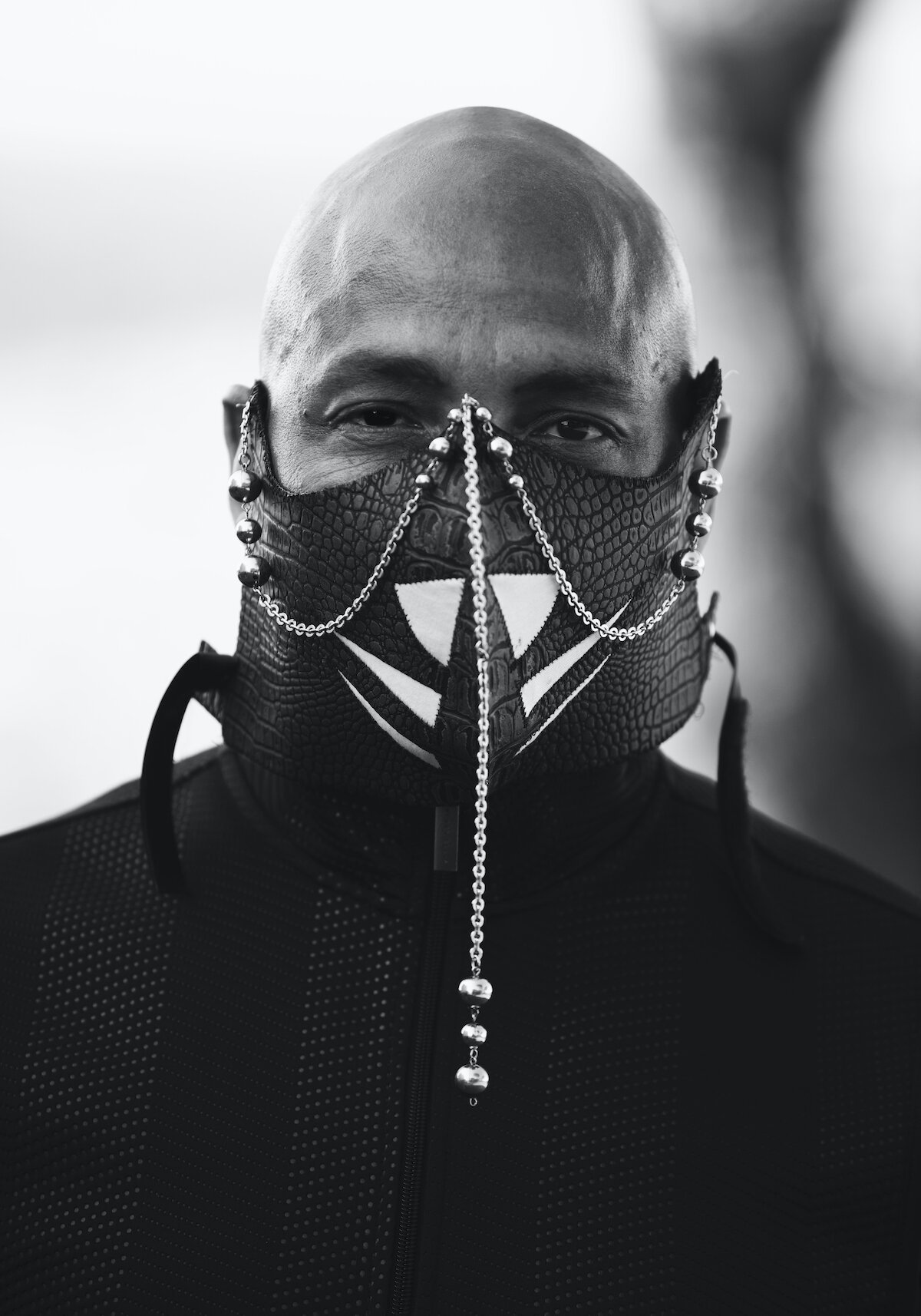
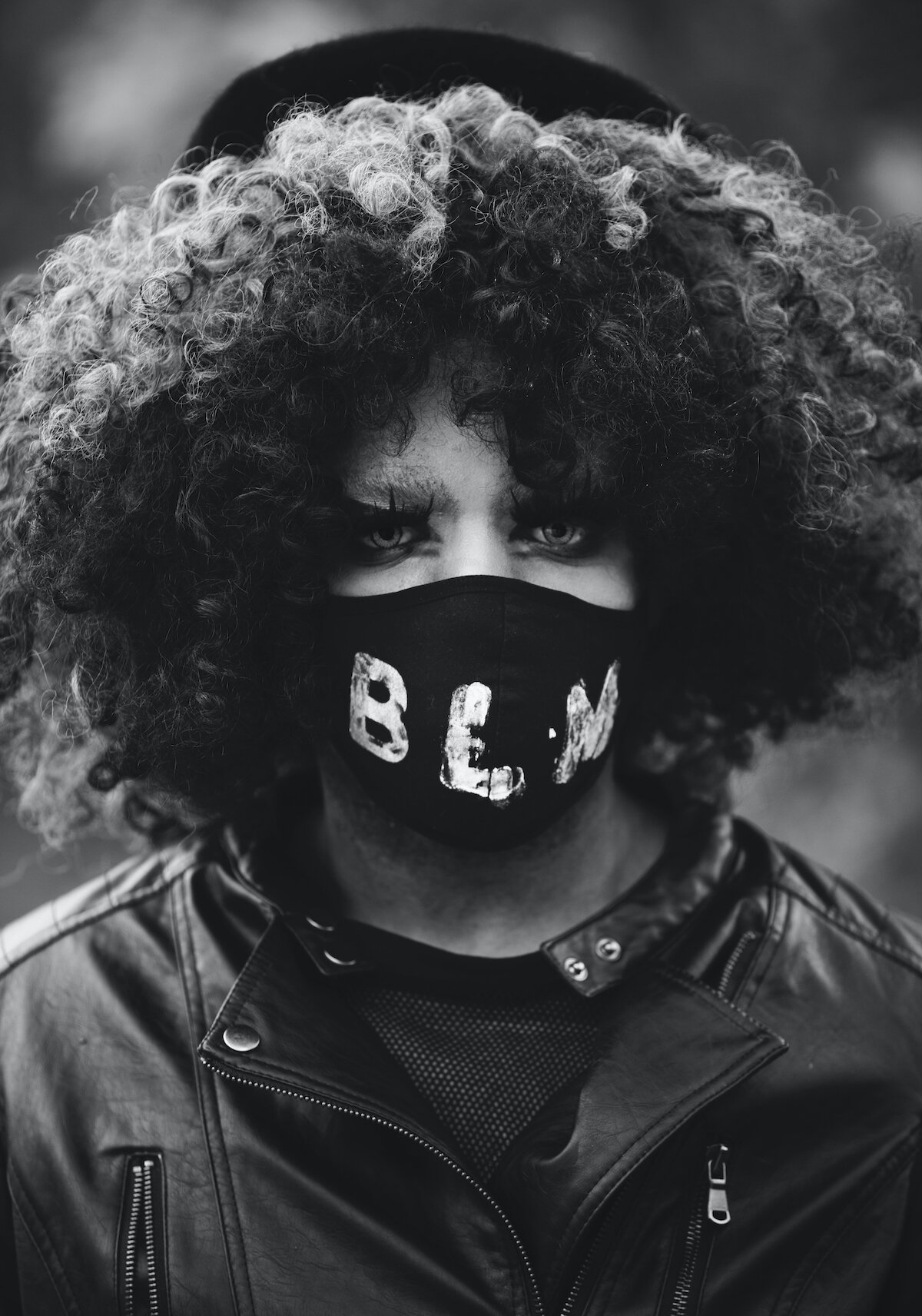
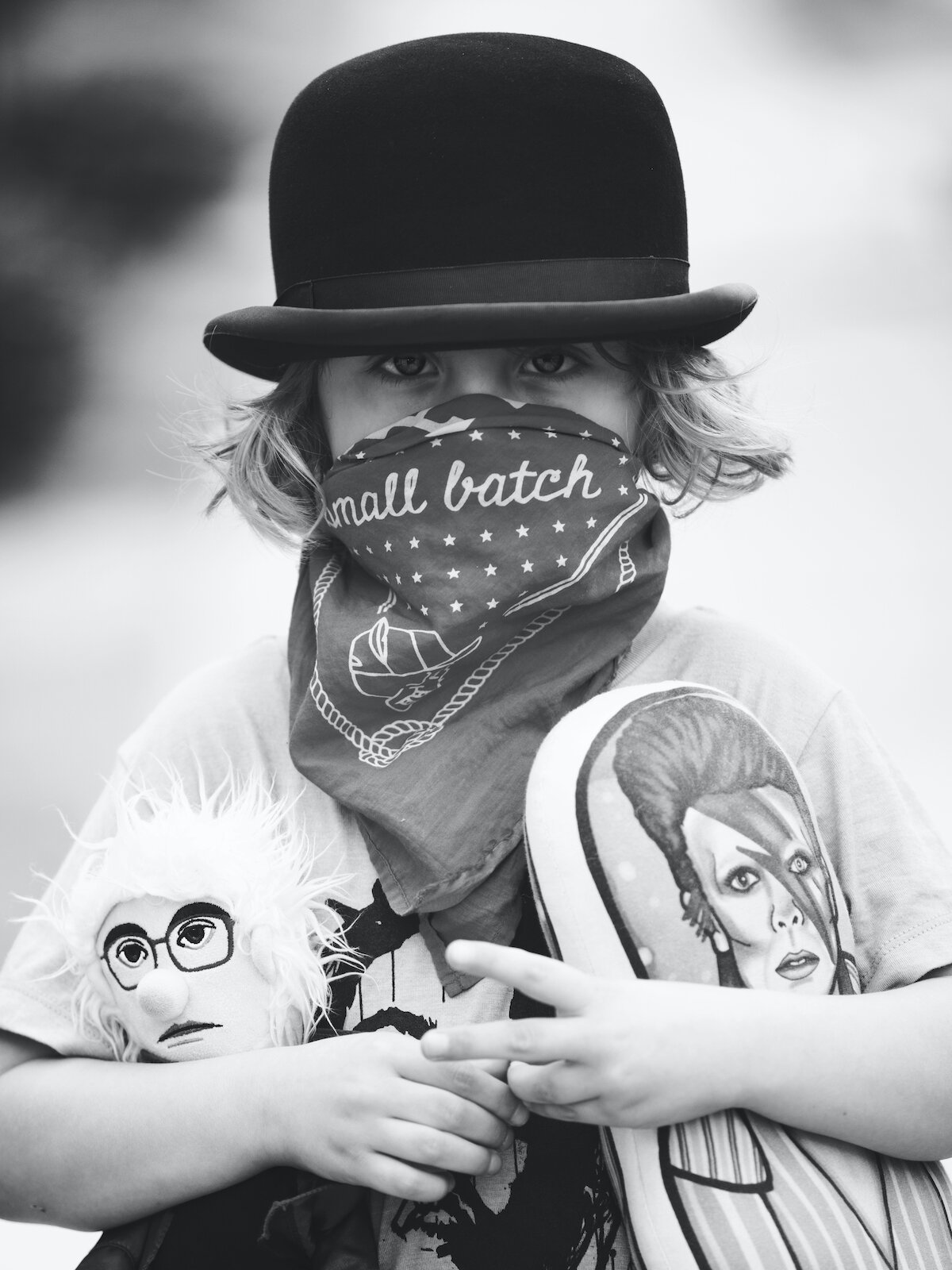
AAS: Talk about your background in photography? Has that always been something you were interested in?
AM: I became much more focused on photography after I launched a children's clothing line called Punkee Monkee. As I developed that brand, I started learning more about photography and began photographing my child models. People started to like what I was doing, and I began to book sessions.
The Masked Project book available at Et Alia Press.
AAS: Your photography book, The Masked Project, is very exciting. How did that come about?
AM: When businesses started to close, including our gallery, M2, I began to realize the importance and the impact of this moment in history. I felt an obligation to document this time so that in 10 years I wouldn't look back and see a missed opportunity and regret not using my creativity and skills to tell this story. It first began just as something I planned to do for a week. It also gave me a way to leave the house and to interact with people at a safe distance and to learn about how they were coping with quarantine. I never started with a book in mind, but rather a small series. That series grew as the weeks rolled on and it was really the individual stories that made me feel the need to compile something more substantial. Erin Wood, publisher of Et Alia Press, then expressed interest in publishing the collection and we just wrapped up final edits on the book last week.
Little Rock Mayor Frank Scott Jr.
AAS: How did you find the models? Did you give any instructions to them before the photo shoot?
AM: When the project began, I simply put out a message on social media and said if anyone was interested to contact me. My husband and I would then get in the car and start contacting people via text. I never really set solid appointments because I wanted it to be more spontaneous at first. If the person was available, we would put them on our map and just go from house to house. The only instructions were that I would text when I arrived and they could meet me outside at a safe distance. Most of the shoots only lasted about 5-10 minutes including time to talk to the person about his/her experience. Later in the series, I sought out some individuals with unique perspectives on quarantine, but approximately 90% of the people included in the book contacted me first.
AAS: Not to put you on the spot but were there any photos you especially liked? Or were especially fun to take?
AM: Yes, that's a difficult question. There are 100 portraits in the book that all hold a memory for me (and another 50-60 we had to edit out of the book that still also were important to the project). But, the final portrait I took for the series does hold a special place for me. It is different from every other portrait in the book in that it is of two people instead of just a single person. Weddings that were scheduled to occur this Spring during quarantine were postponed. One of the weddings I had booked was rescheduled for late June. To be very honest, I was incredibly nervous because I still felt it was not 100% safe to be attending gatherings. My husband (who is my second shooter) and I both maintained distance from everyone and remained masked the entire day despite the hot, humid Arkansas weather. At the entrance to the small chapel, there was a table with masks and sanitizer. Signs in the chapel and at the pavilion encouraged masking and social distancing. It was a wedding like most others, but there was obviously a distinct difference because of the time in which we are living. After the ceremony, the bride and groom walked out of the chapel together and the image of the empty chapel and them in the doorway ready to start their life together was moving to me. I had them mask up for a final portrait there. The resulting image was so symbolic to me and I immediately knew it was to be the final image of the series. The photo conveys so much to me – strength, uncertainty, fear, love, hope. I thought I had already ended the series, but this moment I was certain that these open doors leading out to the world were the way this series would close.
AAS: How many in total did you take and how many will be in the book?
AM: I took approximately 160 portraits and they have been edited down to 100 for the book. Well, 101 counting mine.
AAS: Why did you choose black and white images instead of color?
AM: Black and white brought everyone to a common place. One of my premises was that we are all in this together. I felt black and white conveyed this well and lets the emotion of each individual come through without the distractions of color.

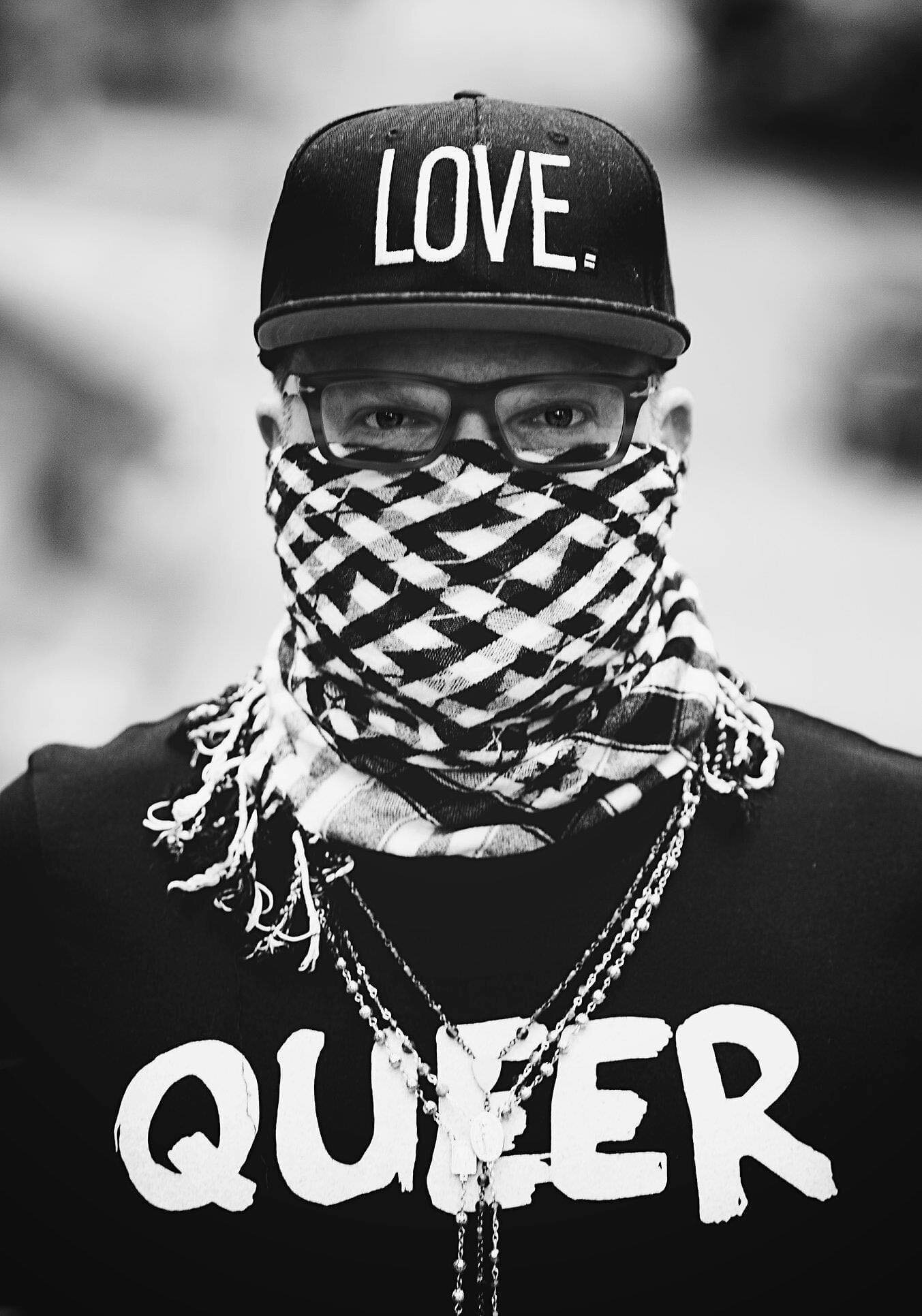
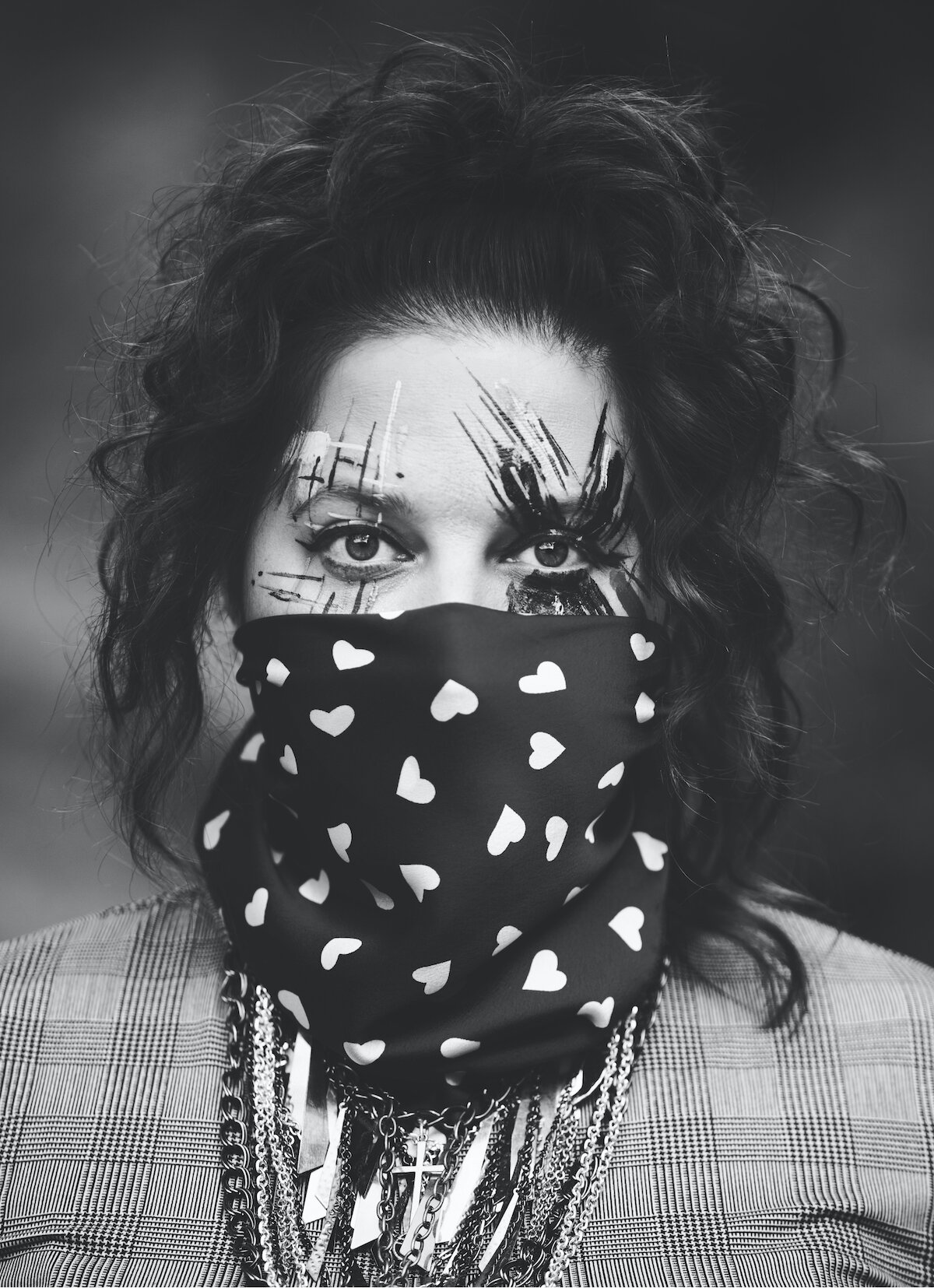
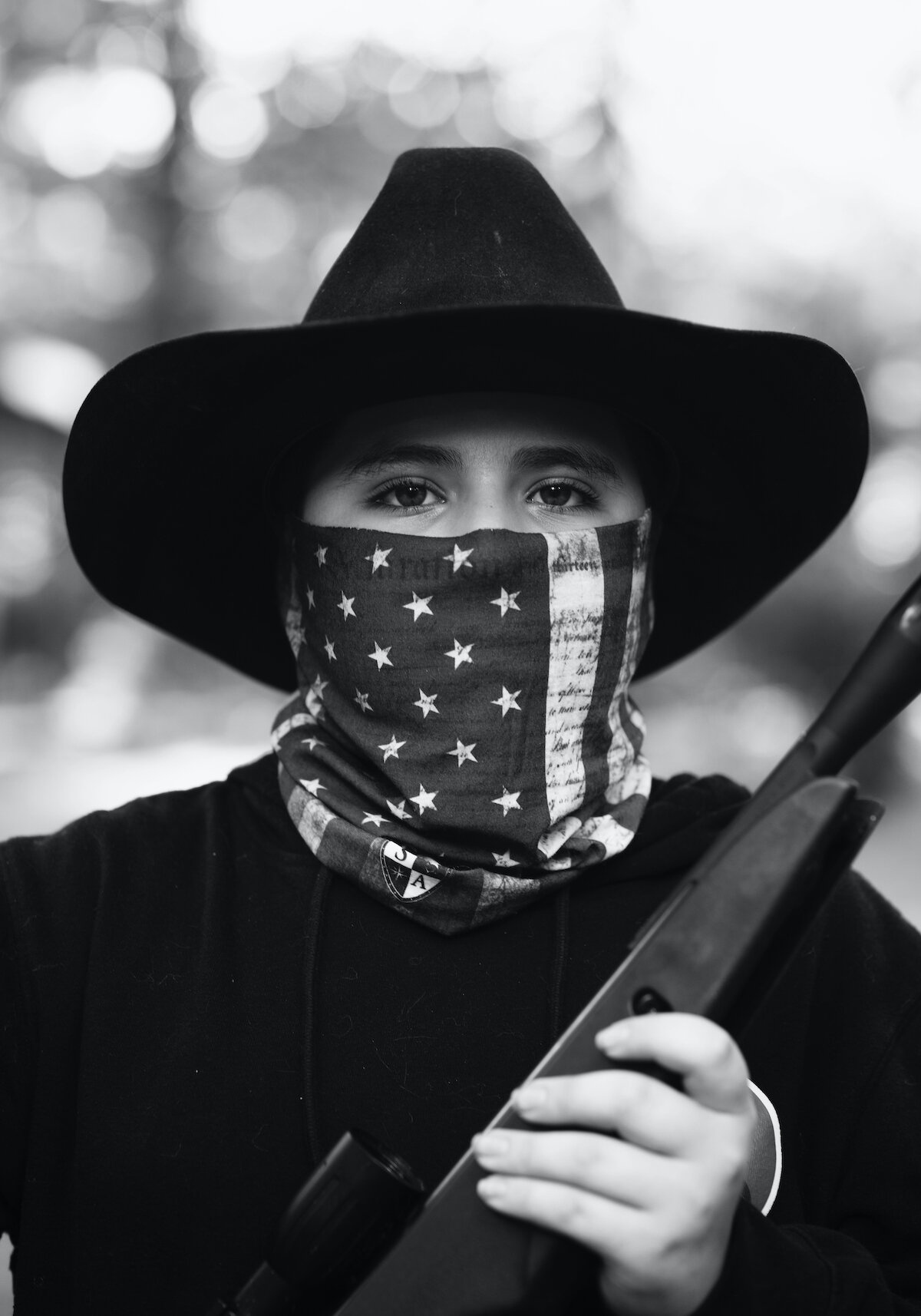
AAS: Are you right eyed or left eyed ;) ?
AM: Left-eyed and left-handed (but I did just have to move my hands up to my face like I was holding a fake camera to figure out which eye :).
AAS: Do you only use digital photography or some film as well?
AM: As of now, I shoot strictly digital. I have a few film cameras I play around with on occasion but I really enjoy the freedom of shooting digital.
AAS: Talk about the Downtown Little Rock Partnership and your public installation of The Masked Project.
AM: Gabe Holmstrom contacted me early in the project about his desire to install several of my pieces downtown in a temporary installation. It was an exciting opportunity to display some of my work large-scale and to showcase the diversity of Little Rock. Again, I began this series out of what I felt was an obligation to myself to document, so to see it develop into a temporary installation in my home city and into a book is a bit surreal.
AAS: How were the banners made for the installations on the side of Rock Town Distillery and Baker’s Alley?
AM: Wheat paste posters were used for those installations. It is also an experiment for DLRP to see how long this application will hold up to the elements. We expect maybe 3 months.
The Masked Project installation
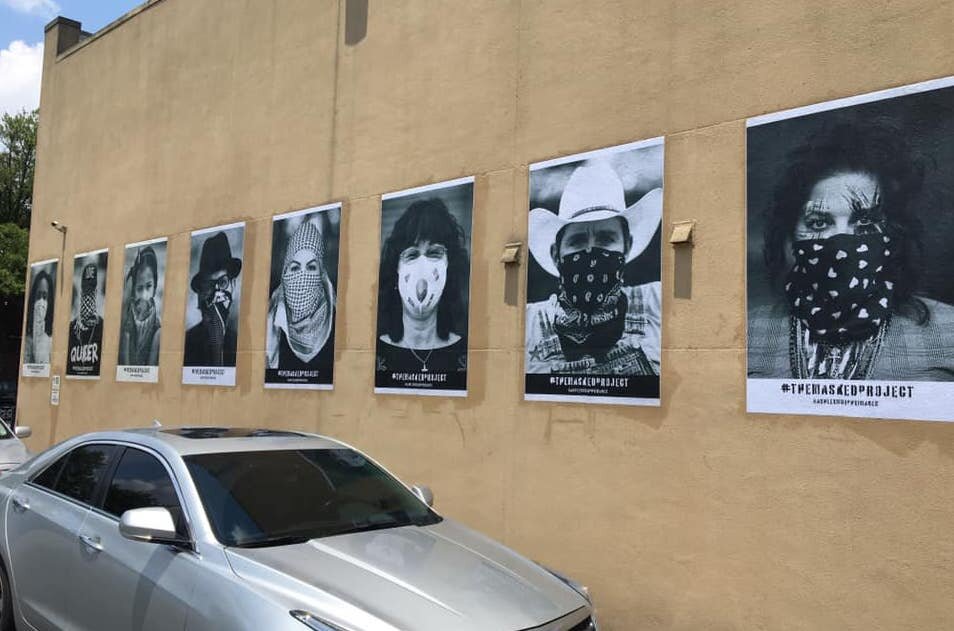
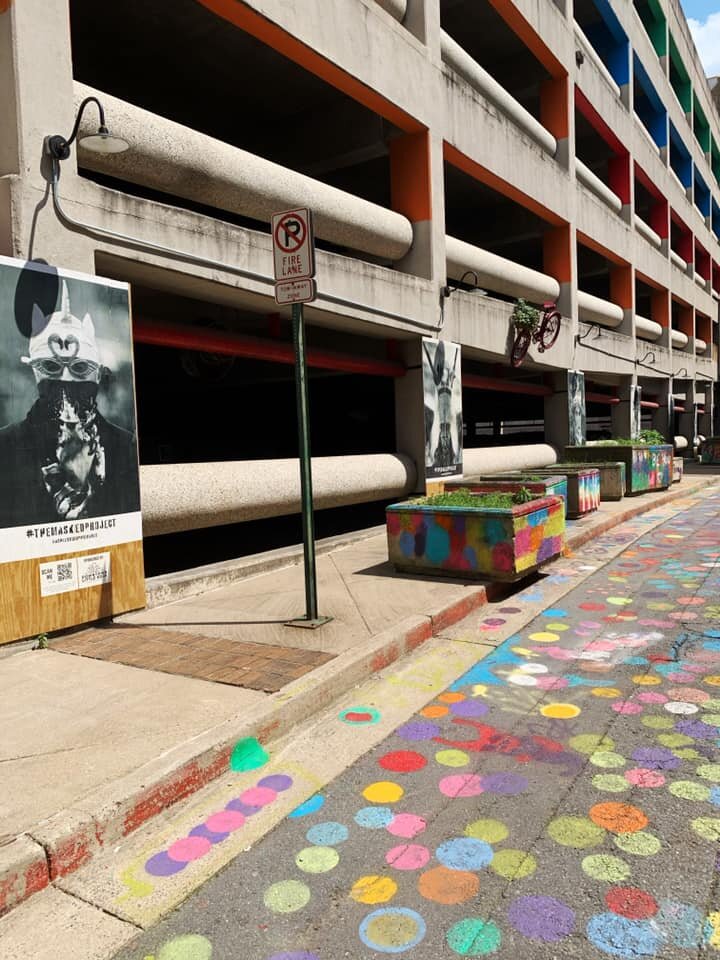
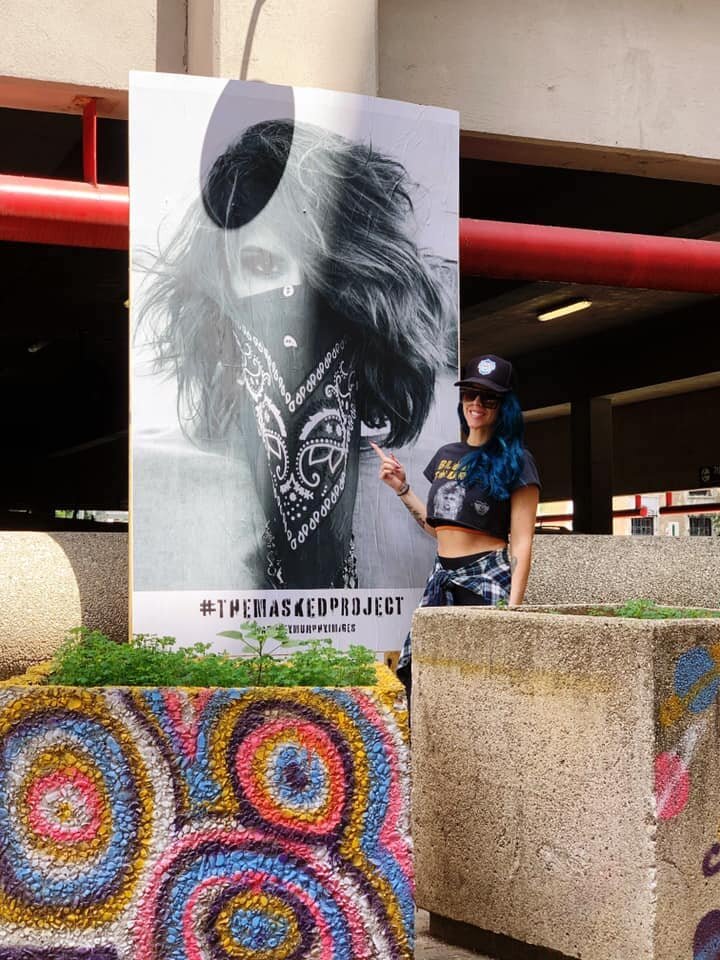
AAS: What kinds of responses have you gotten from the installation? Not everyone is on board for wearing masks, especially back when the installation went up.
AM: I haven't really gotten any negative feedback. It's been incredibly positive. After I posted my first set of images from the project, I developed my artist statement in order to clear things up with anyone who may have an issue with what I was doing. The main thing was to make it clear that this series is not condoning that the masks I'm photographing are safe or that it is safe to go out in public wearing these masks. The series is really about capturing individuals during this strange time where we are experiencing interactions with people with half of their faces concealed. We are focused on the eyes and, as a photographer, this is always where I am focused. That is where true emotion is captured in my opinion. The ending of my artist statement sums this up: This is not about a virus. This is about us.
AAS: Do you have another specific project in the works right now?
AM: This project has been a bit overwhelming and I still have the book launch this Fall and a showing of some of the work at M2 Gallery. I have ideas on what is next but haven't settled on anything yet.
Persevere, woven photograph, 45” x 30”
AAS: I know you are in high demand as a portrait photography, but let’s talk about your fine art photography. Your woven photographs are striking and add an additional level of mystery and drama to the photograph. Talk about that process.
AM: Fine art photography and creative shoots are my passion. Over the last two years, I have started limiting the amount of portrait photography and focusing more on my fine art work. The woven photographs started at a creative shoot I did with a local model. I loved the way the images turned out in both color and black and white and began to play with ways to mesh both. The weaving is something that came to my mind and the first image I did involved a model looking through a window. Weaving the color photograph into that black and white image, I realized that the process and the finished product began to take on deeper meaning for me. As individuals, we are a woven fabric of everything we have done and everyone we have met. Everything leads us to now.
Finding Self, 16” x 24”, from the Underwater Series
AAS: Talk about your amazing underwater series.
AM: Well, in 2019 I came up with the idea to challenge myself creatively and mentally. It was a time in my life when I was confronting a lot. I had seen underwater shoots before and decided to go that direction. I booked three sessions with models I had worked with before that I knew could handle this type of shoot. I researched lighting and camera rigging and set up in a friend's pool. While I can swim, I am not 100% comfortable in water – especially being held under water which is what my husband had to do so that I could concentrate on shooting and not floating back to the top. It was definitely the challenge I was looking for and I got some beautiful images from that shoot. I was physically ill for several days following these shoots from being cold and holding my breath for so long.

AAS: M2 Gallery is now open regular business hours like most of the galleries in town. But artists still need to rely on social media and web-based ‘visits’ by potential buyers. What are you doing in that area?
AM: We have been hustling since March doing much more personalized service for our clients including home deliveries, pickups of frame orders, one-on-one appointments as well as direct texting and e-mailing clients in order to continue sales. We have been very fortunate to have been busy during this time. We just finished selling and installing art at the new Haywood Hotel in El Dorado where there will be numerous M2 artists featured in all common areas and rooms. We are also beginning a complete overhaul of our website to finally make it reflect our inventory, all of our artists and make it so you can shop from home. We are also buying a delivery van for the gallery and planning a couple of remodeling projects at the gallery in order to boost our storage of art while also adding more display area.
AAS: Has it been challenging to juggle mom and business owner and working artist? What advice do you have for others who might be in a similar situation?
AM: It's incredibly challenging for me, especially during this time. Since March, our children, Maddox, 13 and Phoenix, 7, have been with us 24-7 with only occasional breaks when we leave the house for about 3 hours. Travel is important for me and not being able to do that has been draining mentally. The Masked Project has given me some much-needed perspective by first-hand knowing that I am not alone in my struggles and that there are people out there who are much worse off. However, as someone who struggles with anxiety and depression, some days are hard to get through. I'm lucky to have support around me. I encourage everyone to check on your loved ones and the people you know. Mental health during this pandemic can sometimes get overshadowed by the numbers and the spread of the disease. But, it's incredibly important to pay attention to others. We really are all in this together. Check on your people. Stay in touch. Reach out if you are struggling and able to reach out.
Maddox
Phoenix

